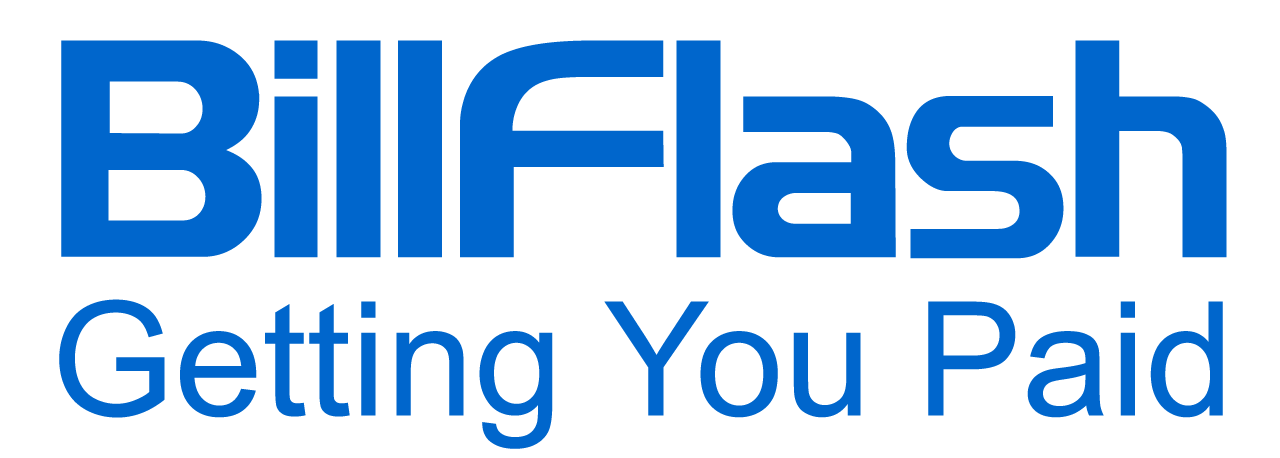In this article we'll explore some of the common challenges surrounding patient collections and strategies that can improve your collection processes.
Patient responsibility costs, including deductibles, copays, and coinsurance, have been steadily rising. High-deductible health plans are becoming more common, resulting in patients being responsible for a greater portion of their medical bills. At the same time, the difficulties of medical billing and insurance claims have made it harder for patients to understand what they owe for healthcare. As a result, many healthcare practices are struggling with collecting patient payments. Unpaid or delayed patient bills can negatively impact practice revenue and cash flow. So, developing effective patient collections is critical for the financial health and sustainability of healthcare practices.
Today, we will look at some of the key challenges surrounding patient collections, share some strategies for improving collections processes, and discuss how technology, analytics, and training can improve staff performance and patient satisfaction.
With the right efforts to engage patients and create transparent billing processes, practices can overcome common hurdles to collecting patient payments.
Understanding the Challenges of Patient Collections

The world of health insurance has undergone a noteworthy transformation in recent years, with a growing number of patients enrolling in high-deductible health plans (HDHPs). While these plans often come with lower monthly premiums, they also place a heavier financial load on patients. This shift has resulted in new challenges for healthcare providers when it comes to collecting payments.
Deductibles, co-pays, and coinsurance can quickly add up, especially for patients living with chronic illnesses or those who need routine medical attention. In 2023, the average deductible for individual coverage was $1,735, similar to the amount in 2022 ($1,763). These high-deductible plans lead to bill shock, as patients are asked to pay large sums before their insurance pays claims.
Another challenge in the world of high-deductible health plans is navigating insurance claims. With different plan types and changing guidelines, healthcare staff have to spend considerable time verifying eligibility and claims. This process not only adds administrative costs but can also be confusing for patients.
Strategies for Improving Patient Collections

By understanding the main obstacles and difficulties that impede successful patient collections, healthcare providers will be able to redirect their attention to possible solutions for overcoming these challenges. Due to the complexities, a multifaceted approach is needed. There is no one quick solution that can magically solve all patient collection issues overnight.
However, by actively seeking improvements in areas like communication, processes, technology, and staff training, small strategies like the ones below can lead to big improvements and ultimately lead to improved outcomes over time.
Clear Communication of Financial Responsibilities: Having open and transparent conversations about costs and payment obligations early in the patient experience is key. Provide estimates for out-of-pocket fees when scheduling visits. Discuss how deductibles, coinsurance, and copays will apply. Make billing policies and expectations clear upfront.
Implementing Transparent Billing Practices: Send patients easy-to-understand billing statements that indicate what is owed. Avoid vague billing codes and descriptions. Provide patient-friendly translations of claims paperwork from insurers.
Offering Payment Plans: Allow patients to spread out their costs over time through payment plans tailored to their financial situation. Automate installment billing to relieve collection efforts.
Leveraging Technology for Streamlined Processes: Invest in practice management software, online patient portals, automated payment tools, and other technology to simplify billing and payments. Make it easy for patients to understand and pay bills online.
Providing Options for Financial Assistance: Inform patients about financial assistance programs, charity care policies, and other options for relief. Work compassionately with hardship cases.
Enhancing Patient Engagement and Education
Healthcare providers seeking to improve patient collections should not rely solely on aggressive collection tactics. It is equally important to enhance patient financial engagement, education, and satisfaction. This fosters greater long-term cooperation and timely payment. Many patients struggle with unclear medical bills because they do not have any foundational knowledge about health insurance and medical billing.
Some topics to educate patients on are:
- Difference between premiums, deductibles, copays, coinsurance, and maximum out-of-pocket costs
- Defining common terms on EOBs and medical bills like allowed amounts, adjustments, write-offs, etc.
- Overview of claims processing and the various parties involved – practice, insurer, plan administrator, etc.
- Tips for maintaining up-to-date insurance information with the provider at each visit to prevent coverage issues
Education about patient collections can be provided through FAQ sections on statements, videos, webinars, in-person consultations, and online patient portal content. Keeping patients informed on the status of their outstanding bills and insurance claims processing can reduce uncertainty.
- Send status update notices when a claim is submitted, when a payment is received, if action is required, etc.
- Provide expected timelines for when a claim should finalize so patients know when their balances will update
- List the next steps and required actions clearly on each notice (e.g. log into the portal to make payment)
Also, the tone and language on medical bills, overdue notices, and other billing correspondences can impact how receptive patients are.
- Maintain a professional but empathetic tone acknowledging the economic challenges many face
- Communicate the required actions patients should take and when
- Provide contact information for billing questions and financial assistance inquiries
- Express appreciation for those who do pay timely bills rather than assuming all patients try to avoid payment
Training Staff for Effective Patient Collections

One of the most important resources for improving patient collections is a well-trained and empowered billing staff. When the front desk, billing personnel, and other staff have the proper skills and guidance, they can handle patient financial discussions better.
Some best practices around staff training are:
- Providing sample dialogues and role-playing exercises to practice having potentially tricky or uncomfortable billing conversations in a compassionate, tactful manner. Work through hypothetical scenarios.
- Conducting regular training refreshers/workshops, not just a one-time training, to reinforce skills. Collections involve constantly evolving patient issues.
- Having staff specialize in financial counseling and not treating it as a secondary responsibility. Dedicated financial advocates can provide high-quality service addressing patient concerns with extra care.
- Giving staff adequate leeway and authority to apply remedies as needed to resolve minor patient billing disputes, within specified limits. This avoids declined payments.
- Tracking metrics around staff performance in converting billing discussions to on-time payments. Identify gaps and additional training opportunities.
- Maintaining up-to-date knowledgebase resources and FAQs so staff are equipped with current information to answer patient billing questions accurately and completely.
- Implementing a formal feedback process for staff to provide input into roadblocks they face in patient financial discussions that leadership may be able to address.
Leveraging Data and Analytics for Improved Patient Collections

By utilizing data and analytics, healthcare practices can streamline operations, increase profits, and improve monitoring capabilities. Analyze past claims data to discover patterns and commonalities among delinquent accounts, then adjust procedures as needed. Implement predictive modeling tools to predict which patients are more likely to miss payments based on past actions, allowing for proactive outreach.
Set up key metrics to track the effectiveness of patient collections, including monitoring the number of patients enrolled in payment plans, days outstanding in account receivables, and amount of bad debt write-offs. With automated report generation, trend analysis becomes a breeze. Although investing in analytics may initially come at a cost, the long-term benefits will outweigh any expenses.
Addressing Legal and Compliance Considerations
Strong collection practices are essential because they not only benefit the practice but also safeguard patients. It is important to accurately bill patients and avoid any unethical or deceitful behavior. Being familiar with federal, state, and local billing laws, and following rules set by HIPAA, FDCPA, and other regulations regarding patient rights, communication records, and information confidentiality is also important.
Transparency in providing necessary billing notifications and disclosures to patients regarding policies, programs, and protections is another important piece of this complex puzzle. Demonstrating ethical and fair treatment toward patients facing financial difficulties is necessary. While achieving compliance will require diligence, it eventually establishes trust with patients and minimizes potential risks.
Collaborating With External Partners and Resources
When looking to improve patient collections, don't limit your practice to relying on internal resources. It can be advantageous to also utilize external partners and resources.
Some options to consider include:
Utilizing Software to Automate Patient Billing: Implementing solutions like BillFlash can streamline the billing process through features like automated payment reminders, text/email invoice delivery, and multiple payment options. This makes collecting payments much simpler.
Working With Collection Agencies If Necessary: In cases where patients have unpaid debts, getting help from third-party collection agencies can take away some of the burden on your staff while still recovering the amounts owed. However, it's important to carefully choose a partner who specializes in medical debt collections and understands the nuances that exist in maintaining the patient-provider relationship.
Networking With Other Practices: Don't be afraid to reach out and connect with other healthcare practices to gain insight and exchange best practices on how to overcome the hurdles of patient collections. This connection can be valuable when it comes to finding new solutions and approaches.
BillFlash: Your Trusted Partner for Billing, Payments, and Collections
As healthcare continues to evolve and patient responsibility rises, healthcare practices face patient collection hurdles that threaten revenue streams. However, by taking a strategic approach and using BillFlash as a partner, healthcare practices can overcome these hurdles. From patient billing to healthcare merchant services, and yes, medical debt collection services when necessary, BillFlash has you covered.
With BillFlash Integrated Collections, your practice can remove the time-consuming manual processes of chasing patient balances with just a click of a button—our team of experienced recovery specialists will handle the rest.
Experience the benefits of BillFlash Integrated Collections by scheduling a demo today!

